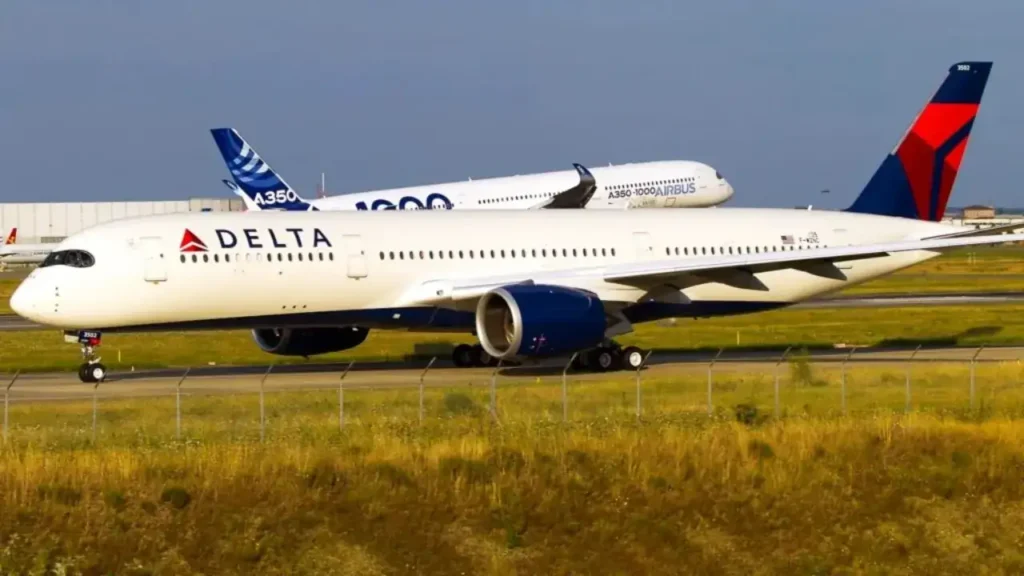Introduction: A Delta Flight DL275 Diverted LAX
Air travel is one of those experiences that we often take for granted until something unusual happens. Most of the time, flights take off, cruise smoothly at 35,000 feet, and land right where they’re supposed to. But every now and then, an unexpected event shakes that predictability. That was the case with Delta Flight DL275 Diverted LAX
The incident quickly caught the attention of travelers, aviation enthusiasts, and media outlets. Whenever a major commercial flight diverts, people want to know—why did it happen? Was it a mechanical problem, a medical emergency, or something more concerning?
In this article, we’ll dive deep into the story of Delta Flight DL275 Diverted LAX, explore the possible reasons for its diversion, look at how airlines handle such situations, and reflect on what it means for passengers and the aviation industry as a whole.
Understanding the Flight: Delta DL275’s Route and Background
Before we analyze the diversion, it’s important to understand the basics of Delta Flight DL275. Airlines assign flight numbers based on route consistency, and DL275 is one of Delta Air Lines’ long-haul international flights. Typically, DL275 has been associated with routes between the United States and Asia, often flying between Tokyo (HND/NRT) and major U.S. cities like Atlanta or Minneapolis.
On the day of the incident, however, Delta Flight DL275 Diverted LAX found itself making an unscheduled landing at Los Angeles International Airport (LAX). For passengers, this meant their carefully planned journey took an unexpected turn. Instead of reaching their intended destination directly, they were suddenly re-routed to California.
Understanding the significance of this flight number is also important because long-haul routes come with extra challenges. Unlike domestic flights that last just a few hours, transpacific flights require more fuel, more crew coordination, and more contingency planning. A diversion on such a route isn’t just a small hiccup—it’s a major logistical decision.
Why Do Flights Divert? Breaking Down the Common Reasons
When people hear about a flight being diverted, their minds immediately jump to worst-case scenarios: engine trouble, security threats, or passenger disturbances. While those situations can certainly happen, the reality is that diversions are often precautionary rather than catastrophic. Let’s break down the most common reasons:
1. Medical Emergencies
The most frequent reason for diversions is a passenger suffering a medical emergency. When someone experiences chest pain, a stroke, or another life-threatening situation, the flight crew must decide whether continuing to the destination puts the passenger at too much risk. LAX, being a large international hub, is an ideal diversion point because it has immediate access to advanced medical care.
2. Technical Issues
Planes are marvels of engineering, but like any complex machine, they can experience malfunctions. Even something minor, like a pressurization warning or electrical issue, can trigger a diversion if the captain determines that landing sooner is the safest course of action. It’s worth noting that in aviation, safety always comes first—even a small anomaly gets taken seriously.
3. Weather Conditions
Sometimes diversions have nothing to do with the plane itself but everything to do with weather. Strong crosswinds, fog, or storms at the destination can force a rerouting. LAX, with its long runways and advanced landing systems, often becomes a diversion airport for flights across the Pacific.
4. Operational Factors
Occasionally, flights divert due to crew duty-hour limitations, fuel imbalances, or air traffic restrictions. While these situations aren’t as dramatic, they still require swift decision-making from the airline.
The Diversion to LAX: Why That Airport Made Sense
Los Angeles International Airport is one of Delta Flight DL275 Diverted LAX the busiest airports in the world, but its role as a diversion hub is just as critical as its role as a departure point. For transpacific flights like Delta DL275, LAX is a natural alternate because of its:
- Proximity to long-haul flight paths across the Pacific.
- Medical facilities and emergency readiness to handle any passenger health crisis.
- Maintenance facilities capable of handling wide-body aircraft like the Airbus A350 or Boeing 777, which Delta commonly uses on international routes.
- Operational flexibility, since it can quickly accommodate large numbers of passengers who suddenly find themselves stranded.
For the passengers onboard DL275, being diverted to LAX wasn’t just about ending the flight early. It was about landing somewhere that could handle whatever issue the crew faced, whether medical, mechanical, or weather-related.
What Passengers Experienced During the Diversion
From a passenger’s perspective, diversions are Delta Flight DL275 Diverted LAX rarely straightforward. Imagine being mid-flight on a long international journey, settling into your seat for a movie or trying to get some sleep, when suddenly the captain comes over the intercom:
“Ladies and gentlemen, due to unforeseen circumstances, we’ll be diverting to Los Angeles International Airport.”
In that moment, passengers are filled with questions. What’s wrong? Will we make our connection? How long will we be delayed? Depending on the reason for the diversion, the mood in the cabin can range from anxious silence to frustrated groans.
On DL275, the diversion likely meant:
- A longer travel day, with passengers needing Delta Flight DL275 Diverted LAX to rebook or wait for another aircraft.
- Possible overnight stays in hotels, arranged by Delta, if the situation couldn’t be resolved quickly.
- Uncertainty—the hardest part for many travelers. Without detailed information, passengers can only speculate.
Airlines train flight attendants to keep passengers calm, provide as much information as possible, and assist with immediate needs like connecting flights or special accommodations.
How Delta Handles Diversions: Behind the Scenes
One of the less visible aspects of a diversion is how the airline itself responds. For a carrier as large as Delta Air Lines, there are well-practiced protocols in place. When a flight like Delta Flight DL275 Diverted LAX diverts, several things happen simultaneously:
- Operations Control is Alerted – Delta’s operations team monitors every flight in real-time. As soon as a diversion decision is made, they spring into action to coordinate ground support.
- Ground Crews Prepare – At LAX, Delta staff and airport workers ready themselves to handle the unexpected arrival. This includes gate assignments, refueling, and passenger services.
- Passenger Services Kick In – Agents at the airport Delta Flight DL275 Diverted LAX begin preparing to assist customers with rebookings, hotel accommodations, or baggage issues.
- Maintenance and Safety Checks – If the diversion was due to technical concerns, engineers inspect the aircraft before it can return to service.
What looks like chaos from the outside is actually a carefully choreographed response. Airlines invest heavily in making sure diversions are handled efficiently, minimizing the disruption while prioritizing safety.
Passenger Rights and Compensation: What Travelers Should Know
Whenever a flight diverts, passengers understandably Delta Flight DL275 Diverted LAX ask about compensation. The reality, however, is that not all diversions qualify for reimbursement or credits. The rules depend on why the diversion happened.
- Medical emergencies: Typically, these are not compensable, as they are considered unforeseen and outside the airline’s control.
- Weather-related diversions: Again, these are usually exempt from compensation policies.
- Technical or operational issues: If the diversion results in a significant delay or canceled leg, airlines often provide hotel accommodations, meal vouchers, and rebooking at no additional charge.
Delta, in particular, is known for having one of the more customer-friendly policies among U.S. airlines. Even if a situation doesn’t technically require compensation, Delta often provides goodwill credits or miles to affected passengers, especially on international flights like DL275.
Media Attention: Why Diversions Make Headlines
Not every diversion becomes newsworthy Delta Flight DL275 Diverted LAX, but when it involves a major international airline like Delta and a large hub like LAX, the story naturally attracts attention. Aviation blogs, local news outlets, and even social media quickly spread word of the incident.
Why? Because diversions raise curiosity. People want to know if it’s a sign of a bigger issue—was there a major safety concern, or was it something Delta Flight DL275 Diverted LAX minor? In the age of real-time flight tracking apps, passengers on the ground can see a plane suddenly veer off course, leading to speculation online before official statements are released.
In the case of Delta DL275, coverage highlighted both the professionalism of the crew and the importance of diversion planning in modern aviation.
Lessons from DL275: What This Incident Teaches Us About Air Travel
Every flight diversion is a reminder that aviation, while highly advanced, still deals with unpredictability. Here are some key lessons passengers and airlines alike can take from this incident:
- Safety always comes first: No matter the inconvenience, the decision to divert is always rooted in protecting lives.
- Communication is key: Passengers value transparency, even if the details are limited. A calm, informative announcement can make a world of difference.
- Flexibility matters: Both passengers and airlines need to adapt quickly to changing plans. For travelers, this means being patient; for airlines, it means having backup plans ready.
The diversion of Delta DL275 wasn’t a catastrophic event, but it was a real-world example of how airlines manage unexpected situations with professionalism and care.
Conclusion: The Bigger Picture of Flight Diversions
Delta Flight DL275 Diverted LAX may have been inconvenient for passengers, but it also showcased the aviation industry’s commitment to safety and preparedness. Diversions are not failures—they’re signs that the system works. Planes, crews, and airports are all equipped to handle the unexpected, ensuring that passengers arrive safely, even if not exactly where or when they planned.
For travelers, this incident is a reminder to pack a little patience along with your carry-on. While delays and diversions can be frustrating, they’re part of the reality of global air travel. And when you think about it, a few extra hours of inconvenience is a small price to pay for ensuring that everyone onboard makes it home safely.


